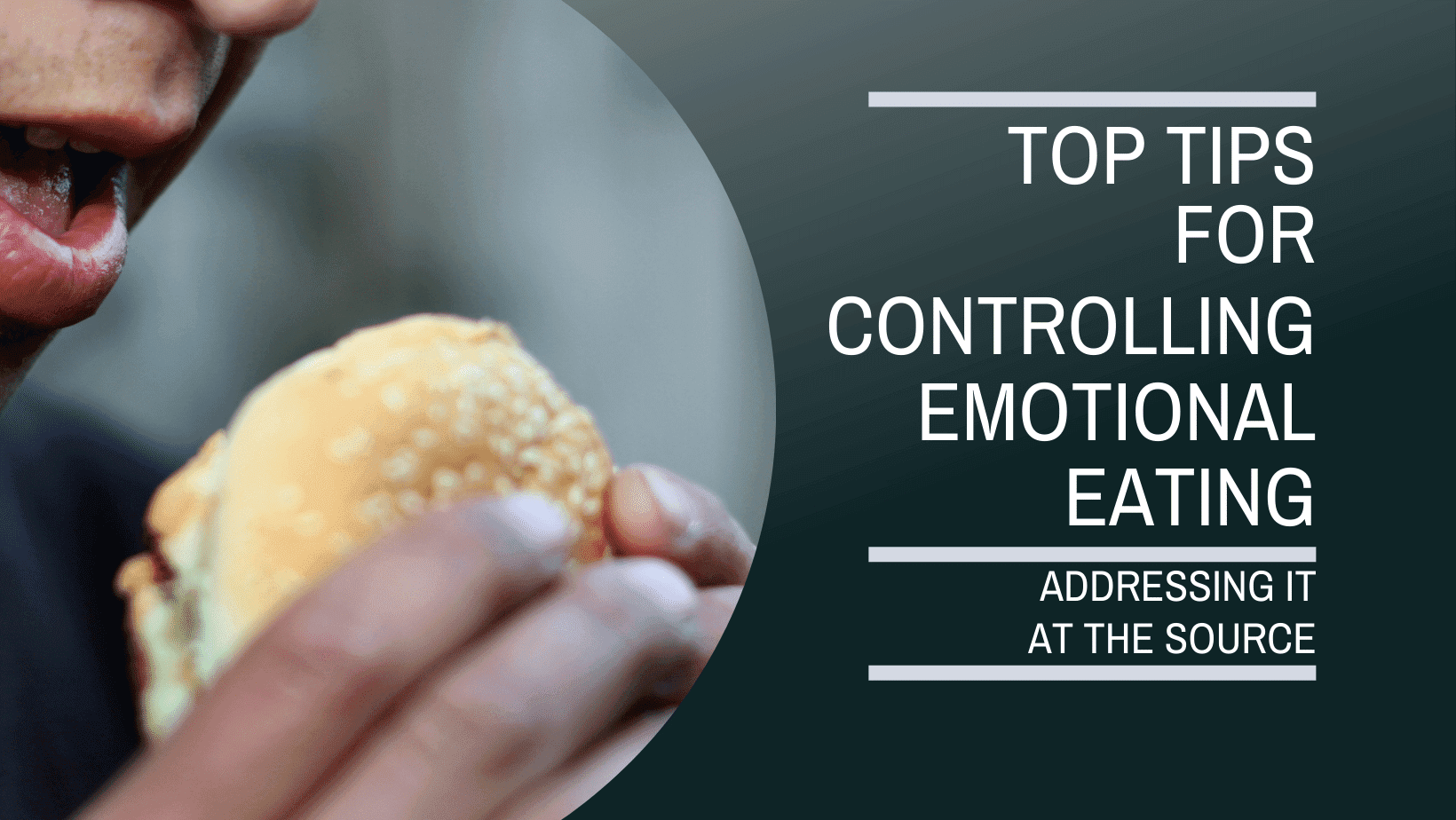Tips For Controlling Emotional Eating
Emotional eating is an issue that many people confront when trying to manage their dietary habits. It can occur when individuals use food for emotional regulation instead of for fuel. To overcome this problem, it is important to identify the triggers that may lead to emotional eating.
Understanding The Triggers Of Emotional Eating
One way to address emotional eating is by recognising the events that occur prior to the emotions stirring that drive a your urge to eat. Then working through the urges and cravings for certain types of food. For example, if someone finds themselves wanting ice cream or chocolate when they are feeling lonely, they may be using these foods to provide a sense of comfort. Additionally, identifying external factors that can trigger emotional eating may help individuals gain control over their eating behaviors. This could include being aware of people or situations that lead them to overeat as well as being mindful of their environment and any cues that could trigger unhealthy eating habits.
By understanding what triggers emotional eating, individuals can better manage their relationship with food and develop healthier coping strategies. Recognising these patterns can help equip them with the tools necessary to reduce or eliminate emotional eating altogether.
Developing Healthy Coping Mechanisms
Developing healthy coping mechanisms can be a challenging yet rewarding process. Establishing healthier alternatives to emotional eating – such as exercise, mindfulness, or spending time with friends – can help individuals combat their negative feelings in more positive ways. Speaking with a therapist is also recommended for those who may be using food as a coping mechanism for trauma.
It is important for those struggling with emotional eating to identify what works best for them. Activities such as journaling, talking to loved ones, or engaging in creative projects may be effective strategies for helping manage difficult emotions without turning to food. Additionally, when cravings arise it may be helpful to focus on deep breathing or other relaxation techniques that aid in calming down and restoring inner peace. By learning how to better cope with stressors and emotions, individuals can develop healthier habits and ultimately break free from the cycle of emotional eating.
Making Eating Rules And Strategies
Time and again, it has been demonstrated that establishing eating rules and strategies can be an effective way to tackle emotional eating. To put it another way, by creating a structure for how and when we eat, we can become more mindful of our actions and break the cycle of overeating.
A useful starting point is to identify trigger foods or situations which are likely to lead to emotional eating. Once these have been noted down, it is then possible to work out specific strategies for avoiding them, such as avoiding having certain foods in the house or not going shopping when feeling anxious or low. Additionally, it may be beneficial to create a meal plan for the week ahead so that food choices are predetermined. This kind of advanced planning and actively practicing them in simulated scenarios or even rehearsing them in front of the mirror can help reduce feelings of being overwhelmed in stressful situations.
In addition, setting boundaries around food consumption can help control impulsive cravings. For example, deciding on a certain maximum number of snacks per day or not eating after a certain time in the evening might help prevent overeating due to emotions. Once these rules have been established they should be strictly followed as far as realistically possible – this will help build discipline around food consumption and reduce binge eating episodes associated with emotional states.
Finding Support And Accountability
Having the right support and accountability can make all the difference when it comes to overcoming emotional eating. But, how do we get this? It is not always easy to find the right people in our lives. Fortunately, there are other options available.
One of the most effective methods of finding support and accountability is by joining a support group. This type of group provides a safe space for individuals to talk about their struggles with emotional eating and share strategies for overcoming it. Support groups also provide a sense of community, which is often lacking when we are struggling with an issue on our own. Additionally, members of these groups often serve as both mentors and accountability partners, helping one another stay on track and reach their goals. Other options include seeking help from an online coach or therapist who specializes in emotional eating disorders or using online forums where people can exchange tips and advice. Ultimately, identifying your needs and reaching out for help will make all the difference in conquering emotional eating.
Reframing Emotional Eating Habits
Reframing emotional eating habits is an important step in overcoming the issue. It involves recognising and acknowledging the purpose of emotional eating, then refocusing on healthier ways to address emotional needs. This can be done by identifying triggers that lead to emotional eating and developing strategies to respond to these triggers in a positive way.
Research has found that mindfulness-based interventions may help people manage their emotions through awareness and acceptance of physical sensations associated with emotional distress. Mindful eating, for instance, encourages individuals to become aware of their feelings, thoughts and physical sensations when they are about to eat and to make conscious decisions about what they choose to eat.
Additionally, cognitive restructuring techniques can be useful in helping individuals identify distorted thinking patterns that lead to unhealthy behaviors such as emotional eating. By reframing these beliefs with more accurate and realistic thought processes, it is possible to reduce cravings for unhealthy foods while developing healthier coping skills.
Conclusion
Emotional eating affects a large percentage of the population and is a complex issue, but it can be overcome with a few simple (on the surface) steps. Firstly, individuals should identify their triggers and what is causing them to emotionally eat. Once the root cause has been identified, developing healthy coping mechanisms such as mindfulness, exercising, or talking to a friend can help replace the urge to emotionally eat. Furthermore, making rules and strategies for eating can provide structure and accountability. Lastly, it is important to not beat oneself up for indulging in emotional eating behaviors but rather reframe them into something positive. With these tips in mind, individuals can learn to manage their emotions and ultimately overcome emotional eating.
Therefore, by recognizing the triggers of emotional eating and implementing strategies such as finding support and reframing habits, individuals will be able to break free from this cycle of emotions leading to unhealthy food choices. Additionally, developing healthy coping mechanisms will provide an alternative route for individuals when they are feeling overwhelmed by emotion. Through dedication and perseverance, emotional eating can be overcome and replaced with healthier habits that are more beneficial in the long run.










